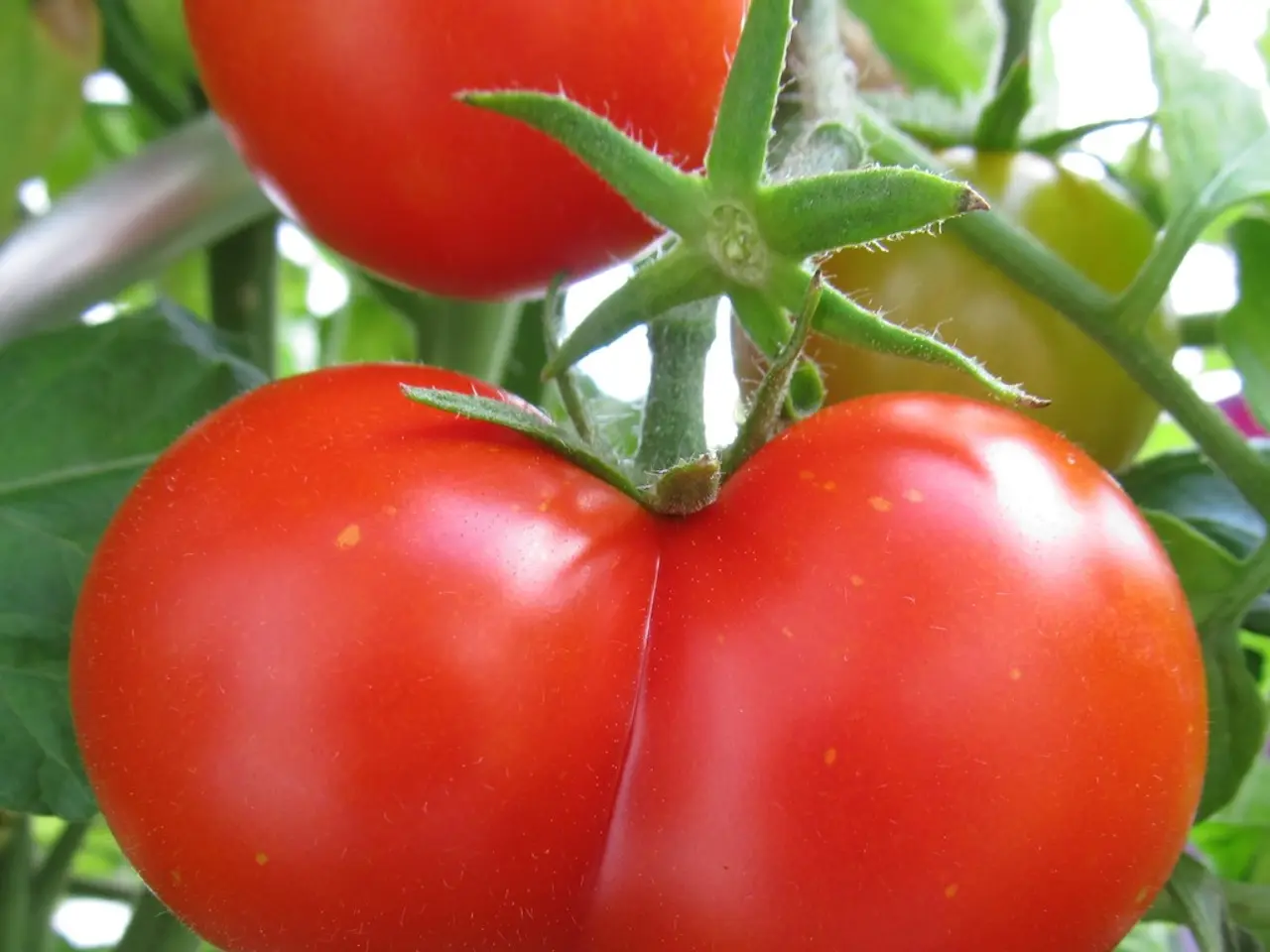Strategies for Accelerating Tomato Plant Growth: 7 Methods for Harvesting Rich Yields Sooner
Growing tomatoes can be an enjoyable and rewarding experience for gardeners. However, achieving a bountiful harvest requires careful attention to the growth process. Here are some tips to help you grow strong, productive tomato plants and speed up fruit ripening, tailored to different climates.
Avoid Crowding Plants
To prevent legginess and promote healthy growth, it's essential to space tomato plants about 20 inches apart. This provides good airflow and light penetration, especially in denser or more humid climates. Proper spacing also reduces disease risk and ensures sufficient nutrient availability.
Controlled Mild Stress for Accelerated Ripening
Slightly reducing watering by a day or two or applying small mechanical stress (such as inserting a toothpick gently into the stem below the first fruit cluster) can stimulate ethylene production, speeding ripening without harming the plant. However, avoid this in extreme heat, drought, or when the plant shows serious stress signs.
Maintaining Optimal Temperature and Nutrient Levels
Providing moderate temperatures (between 20-25°C) and ensuring adequate potassium and phosphorus levels supports faster and healthier ripening.
Enhancing Light Exposure
Using reflective materials like aluminum foil around the base can bounce light upward, improving ripening by boosting ethylene synthesis and warmth. However, remove these if temperatures get too high to avoid heat stress.
Adapting to Climate
In cooler regions with shorter growing seasons, mild stress techniques and ripening aids (like reflective mulch and toothpick method) can be useful to speed fruit maturity. In hotter or arid climates, prioritise avoiding water stress and leggy growth by ensuring space and shade management.
Other Tips for Tomato Growth
- In the US, the south has a significantly longer warm period than the north, allowing for earlier planting of tomatoes outdoors.
- Using a raised bed warms the soil more quickly and allows for control over soil composition, promoting quicker growth.
- Fertilizing tomatoes with a gentle compost tea, fish emulsion, or kelp is recommended for young plants.
- Mulching tomatoes with plastic, straw, or other materials around the root zone can help warm the soil and provide nutrients as it rots.
- A mixture of shale, compost, manure, soft rock phosphate, alfalfa meal, and worm castings is ideal for tomato growth.
- Phosphorus formulas can direct fruit production, and nitrogen can come from well-rotted manure or compost, side-dressed around the plant.
Pruning and Plant Care
- Starting tomatoes indoors eight weeks before the date of the last frost gives seedlings time to get big enough for outdoor transplanting.
- Pruning indeterminate tomato plants encourages growth and fruit production by removing strictly vegetative growth. Pruning should begin by early July, and suckers should be removed except for the first one below the lowest flower.
- Encouraging the growth of tomato plants helps ensure plenty of fruit in colder climates where a killing frost may occur early.
- Established plants should not be fed with high-nitrogen food as it concentrates all energy into vegetative growth instead of fruits.
Protecting Tomato Plants
Water walls can protect seedlings from wind and keep them warm, especially when a raised bed isn't available. In colder regions, tomato plants must be started indoors or a start must be purchased due to a shorter growing season.
Pest Control
Cedar shavings can deter tomato pests due to their pest-repellent properties.
By following these tips, you can balance accelerating tomato growth and fruit ripening with maintaining strong, healthy plants that are less leggy and more productive, suited to your specific climate conditions. Happy gardening!
- A well-spaced home-and-garden, with tomato plants placed 20 inches apart, can foster an enjoyable lifestyle of gardening by promoting healthy growth and reducing disease risk.
- To speed up tomato fruit ripening, consider the home-and-garden technique of slightly reducing watering and applying mild mechanical stress, such as a toothpick under the first fruit cluster, in moderation to stimulate ethylene production without causing stress in extreme conditions.




